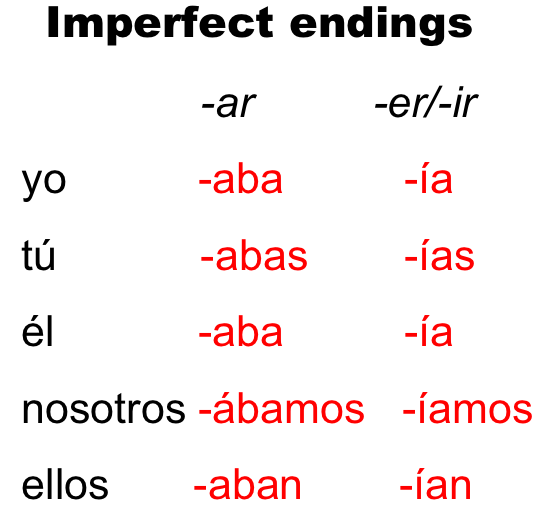

The imperfect (abbreviated IMPERF) is a verb form which combines past tense (reference to a past time) and imperfective aspect (reference to a continuing or repeated event or state).

Generally speaking, the preterite is used for actions in the past that are seen as completed, while the imperfect tense is used for past actions that did not have a definite beginning or a definite end. Actions which are not physical, that is feelings and mental actions, usually use the imperfect tense. It doesn’t have a definite beginning or ending. The imperfect tense is also used to set the stage for an event that occurred in the past.

When using the imperfect, the action is considered ‘incomplete.’. This tense is most often found in written language. Similarly, what is preterite and imperfect in Spanish? The imperfect tense in Spanish is a verb form used to express happenings and actions in the past that are viewed as incomplete, continuous, repeated, or habitual. It is also used for descriptions, states of being, and for providing background information about the past. It is used for ongoing or recurrent actions in the past. When to use the Imperfect de nio/a (As a kid) de joven (As a young man) a los 12 aos (At 12 years old) cuando era nio ( When I was a kid) Cuando tena. The imperfect (imperfecto) is one of the two simple past tenses in Spanish. The imperfect past tense in Spanish will also be used for descriptions of situations or people in the past, particularly for talking about age, dates, events. In general, the imperfect tense in Spanish will correspond with these English equivalents: yo hablaba I. tú bebías él/ella/usted bebía nosotros bebíamos vosotros bebíais ellos/ellas/ustedes bebían. singular plural first person: ía: íamos: second person: ías. ser, ir and ver are irregular in the imperfect.Īdditionally, what is the imperfect tense in Spanish used for? Imperfect. Here are the endings for regular verbs that end in -er or -ir. To form the imperfect tense of -er and -ir verbs, take off the -er and -ir endings and add the endings: -ía, -ías, -ía, -íamos, -íais, -ían. To form the imperfect tense of -ar verbs, take off the -ar ending and add the endings: -aba, -abas, -aba, -ábamos, -abais, -aban. Furthermore, what are the imperfect endings in Spanish?


 0 kommentar(er)
0 kommentar(er)
